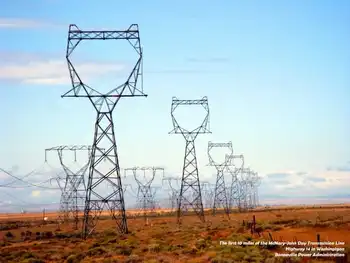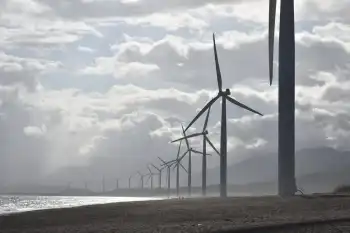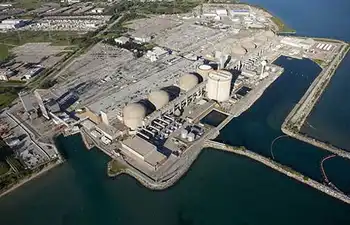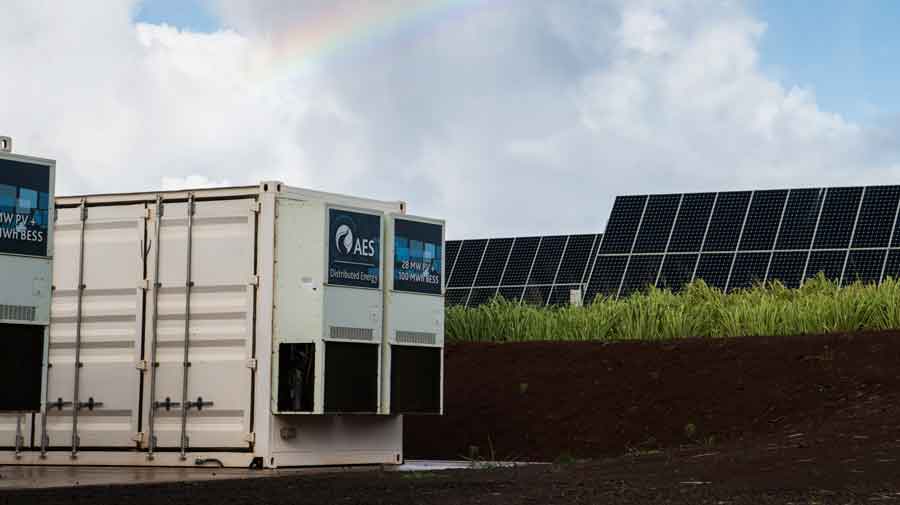Epcor Joins Rising Tide Of Electricity Exporters
EDMONTON, AB -- - The moon rises over power lines leading into the city from the west, where Epcor proposes an expansion of the coal-burning Genesee plant.
Epcor has joined the swelling parade of companies applying for licences to export Alberta electricity.
Encore Energy Services, a subsidiary of Edmonton-owned Epcor Inc., applied this week to the National Energy Board to obtain a licence to export a maximum of 10 million megawatt-hours annually over a period of 10 years.
The field of potential exporters is getting crowded. Ten days ago, the trading arm of a New York investment house, Morgan Stanley Dean Witter, submitted a similar application. And licences have already been issued to 10 other companies, including huge U.S. brokers like Enron, Duke and Dynergy and Alberta firms such as Atco and TransAlta.
Epcor power is already being exported in off-peak hours, said company chief financial officer Brian Vaasjo. It's "interruptible" power, meaning exports must be halted if the electricity is needed to satisfy Alberta demand.
"That surplus is currently being exported by others. Instead of somebody else exporting (it), we'd displace them and export our own power."
Having the licence and actually exporting electricity are two different things, however. The only transmission line to the needy markets in California and other western U.S. states is through the Crowsnest Pass to British Columbia. It can handle only 600 megawatts or less, although it has the technical capacity to transmit 1,200 megawatts.
The 10 million megawatt-hour export figure is based on the maximum annual capacity of that line -- and all the licensees are competing to use it. "The terms and the numbers are basically arbitrarily set, and at a level that exceeds the amount that we might ever possibly want to export," Vaasjo said. But the licence is relatively easy to get, "so you might as well get it."
The news was unwelcome at the Pembina Institute, an Alberta environmental group that opposes the notion of running Alberta coal-fired power plants for exporting electricity.
"But it doesn't surprise me at all," said Mary Griffiths, Pembina environmental policy analyst. There are proposals on the books to build plants generating over 4,000 megawatts of power, she said. But the province will likely need only half that amount.
Several of the proposed plants would burn coal, including a 450-megawatt expansion at Epcor's Genesee plant and a 900-megawatt addition to TransAlta's Keephills facility, both near Lake Wabamun, west of Edmonton.
"We would get the air pollution here and the power companies would get the profits," Griffith charged.
Related News
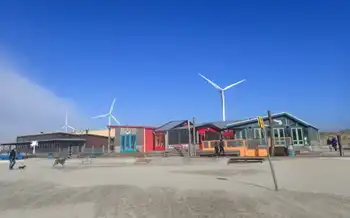
Dutch produce more green electricity but target still a long way off
AMSTERDAM - The Netherlands is generating more electricity from sustainable sources but is still far from reaching its targets, the national statistics office CBS said on Friday.
In total, the Netherlands produced 17 billion kilowatts of green energy last year, a rise of 10% on 2016. Sustainable sources now account for 13.8 per cent of energy generation.
The biggest growth was in wind energy – up 16 per cent to 9.6 billion kWh – or the equivalent of energy for three million households. Wind energy now accounts for 60 per cent of green Dutch power. The amount of solar power, which accounts for…

